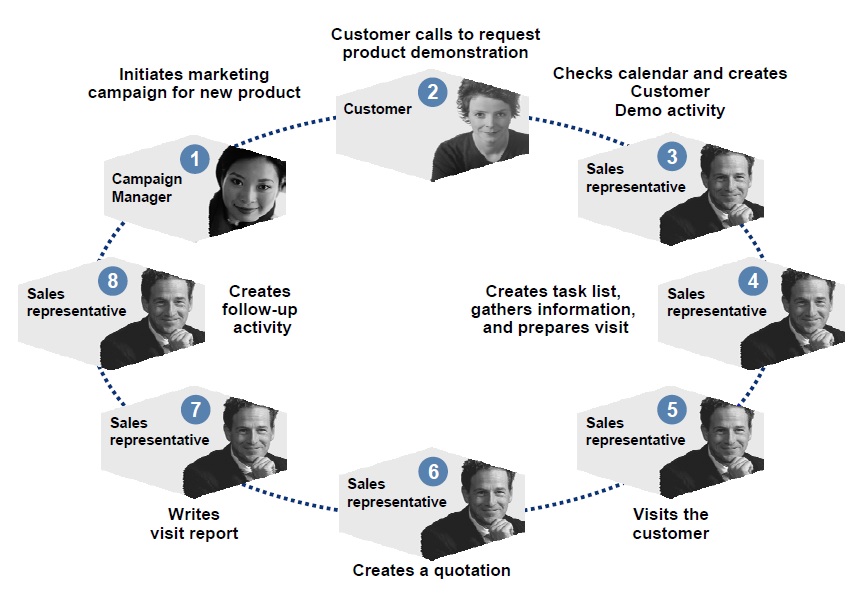Being an integral part of customer relationship management (CRM), activity management helps administer all the activities undertaken by employees in an organization. Therefore, any data saved becomes a source for important information that can be checked out by employees for further use. In a way, activity management in SAP CRM helps answer quite a few day-to-day questions, like:
- Are there any appointments for next week?
- Who can replace the absent employee in external sales?
- Is it possible to arrange a meeting with Mr. John next week?
Both sales representatives and sales managers can gain immensely with activity management in SAP CRM. How? For a sales representative, it is possible to understand the outcome of a customer visit after a call is made to him or her. Similarly, for a sales manager, it would mean getting an overview of all the activities that have been happening in the department during a chosen period of time.

With activity management, you can easily interaction logs and appointments can be noted down as private. It is also possible for you to mark activities as subsequent documents for conducting other business transactions like contracts, sales orders, leads, opportunities, etc. What’s more, activity management can be undertaken at any stage of CRM lifecycle. For example, you can make a follow-up to the customer in the form of a document and check whether he or she is interested in renewing the contract.
And for those looking to integrate activity management with other tools, there is some good news. In fact, activity management can be synced with e-mails i.e. IBM Lotus Notes and Microsoft Outlook or CRM mobile. What this option does is have the employees connected with the sales cycle, thereby allowing them to keep a track of all activities and appointments.
Activity Management Cycle in SAP CRM
Right from the time the customer makes a call to the company, till the follow-up activity, there is an activity management cycle one will find in SAP CRM. Here’s a brief of this cycle:
- Kick starting a marketing campaign against a new product or service
- Calls from customers seeking more information about the product or service and placing a request for product or service demonstration
- The sales representative will check his or calendar and will create a demo activity for the customer
- Sales representative will then gather information and will prepare for a visit
- Sales representative will visit the customer
- Sales representative will create a quotation against the requested service or product
- He or she will generate a visit report
- Will initiate the follow-up activities
What does activity management mean for employees?
In a nutshell, there is so much that employees can benefit from activity management. Listed below are some of the benefits they can expect from it.
- Manage their workload by creating various tasks
- Establish activities like appointments or interaction logs in order to log in the interaction details they have with customers
- Use the calendar for viewing various activities and appointments
- Use campaign response recording for creating activities in CRM Marketing
- Use search facilities and the worklist for monitoring various activities
- Viewing fact sheet to collect important information pertaining to accounts